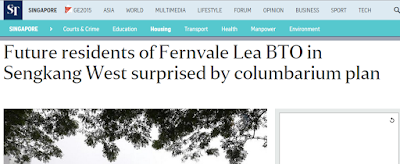One week into the national lockdown to contain the Coronavirus pandemic and the people of New Zealand are coping reasonably well. Economically, there are a lot of questions and uncertainty on what kind of a climate we will see on the other side of this, but on the social front, not many people are feeling left out in the cold for the moment. Now that we as a nation have a basic understanding on what self-isolation on the national scale looks like, the biggest question is the timeframe that we can expect to be in this state of emergency. For now, we are looking at an initial 4 weeks but this is merely an estimate. The real litmus test will be in how the number of cases unfold over the next few weeks and if things look good, then we can be more optimistic about returning back to normal (or at least begin to head in that direction).
The numbers being reported by the Ministry of Health started off disjointed with some days revealing the data systematically and precisely while on other days, they come across as vague. The numbers have now become defined and we can expect the numbers reported to be stable. However, while The Spinoff has started to represent the data visually using charts and maps, there does not appear to be any source that is actually crunching the numbers that are being shared - which in itself can tell us a lot about how the situation is unfolding. The following analysis therefore draws exclusively from the figures revealed by the Ministry of Health on its Media Release section of its website, and the historical data has been mapped to generate the following graph.
The graph is a comprehensive overview of the total cases that have been reported and includes the total number of tests done and other breakdown such as how many active cases (i.e. confirmed but not yet recovered) there are on any given day. In the following sections, the important elements of this mapping are explained to provide an idea on how the lockdown - and life in Aotearoa, in general - may be impacted in the weeks and months ahead.
Active Cases
With the number of people recovering after their bout with COVID-19 steadily rising, the number of active cases of the disease - be it in isolation at home or warded at the hospital appears to be slowing down. This means that even as we report 950 confirmed+probable cases for the nation, the number of cases that we are currently worrying about as of today is 822 (the green line on the graph below). This is an important distinction to make as there is a difference between having thousands of reported cases with only a few hundred actually active (with the rest recovered) and having hundreds of reported cases that are all active. The number of active cases is the one that we do not want breaking the healthcare capacity and currently, we are in a healthy (no pun intended) position on this front since the number of hospitalised cases being continues to be a fraction of the active cases (1.2%) while the vast majority (98.8%) are being managed through self-isolation.
Ratio of Confirmed Cases to Tests
The initial approach adopted in New Zealand was to test only those whom we could confidently suspect of being likely a victim of COVID-19 while others presenting symptoms but not in urgent need of medical care were asked to self-isolate voluntarily. However, once the number of confirmed cases started to rise exponentially, so did the testing become more prevalent and cover more people having symptoms. Since there is the potential effect of having more cases simply because we are detecting more (i.e. the effect of wider reporting and not of actual spread of the disease), it is important to identify if the proportion of cases is consistent with the number of tests being conducted.
In that regard, we are seeing that the ratio has been gradually rising from 1.1% of the tests being positive for COVID-19 on 22 March to 2.9% being positive as of 04 April 2020. What we would want to see is for this ratio to be arcing down over time (i.e. sloping downwards) and for the moment it does appear to be easing out. With more and more tests being done while the rate of detection reduces, it is an encouraging sign that the spread of the disease is largely contained.
The Verdict?
The first month has been harrowing and there has been a good dose of anxiety on whether we can survive this comfortably, even as we are committed to fighting this adversary together as a nation. The early indication based on the first month of developments suggest that we are indeed handling things well. Namely, our detection rate is consistent (i.e. the more tests we do, the more cases we uncover in proportion) and the strain on healthcare infrastructure is low - at 1.2% of active cases being hospitalised, we could theoretically manage up to 388,000 active cases at any given point (based on the reported capacity of 4,660 hospitalised cases of COVID-19). Thus, as it stands, the numbers do not give any cause for concern and there is even enough evidence to be hopeful.
Note: As with any data set, the graph will become more indicative as we gather more data points and can even be potentially predictive for us to prepare for the future. This graph will be monitored daily and an updated version may be updated here at a later date. In the meanwhile, the original data set can be requested from the author via a message to gangasudhan [at] gmail.com.





















